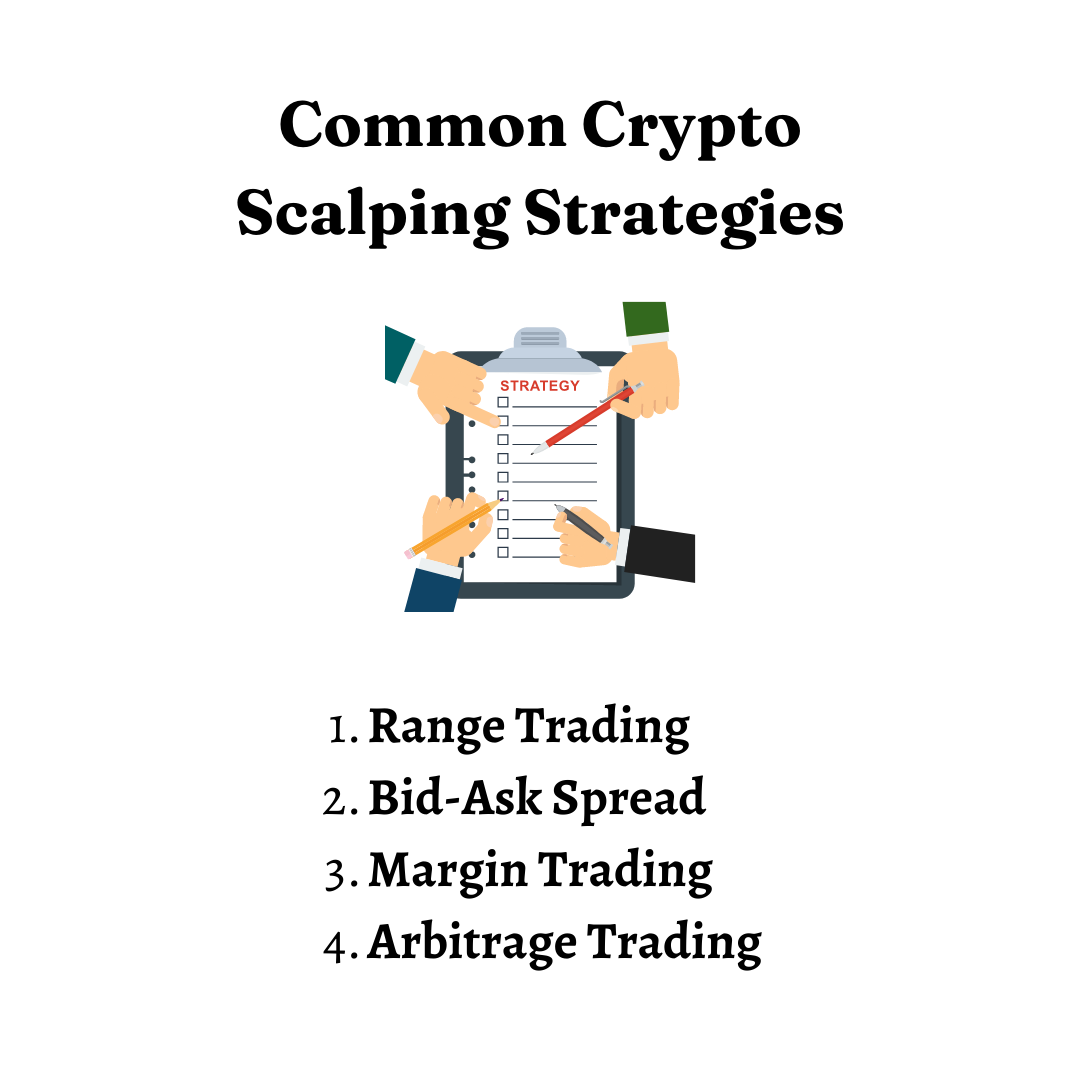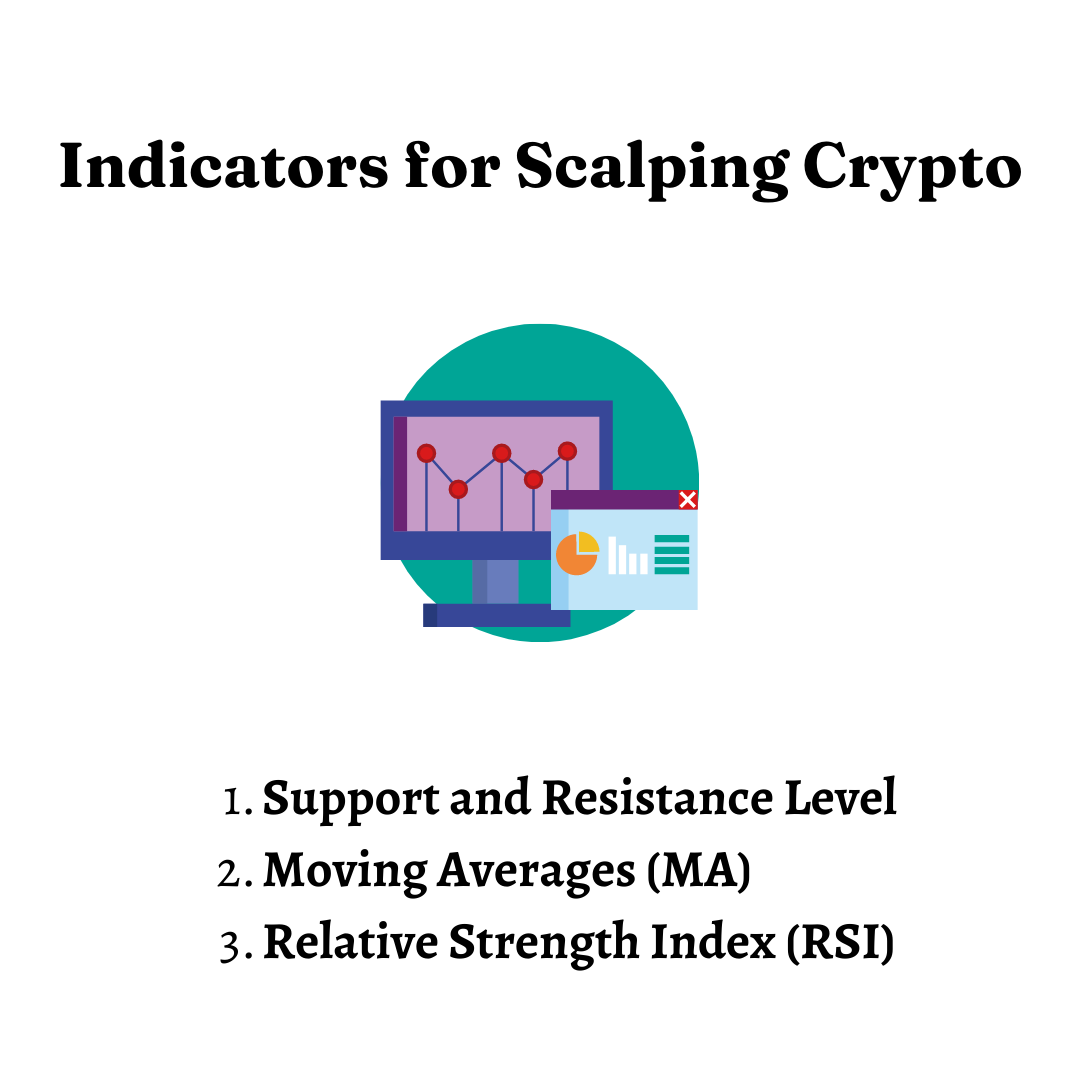Scalping Crypto: Does it Still Work in 2022?
Crypto is a highly volatile asset. That’s why most people choose to hold onto their crypto for a very long time before selling it since it’s the easiest and safest way to profit from crypto. However, some people have less patience and a higher risk appetite. And to them, a strategy like swing trading or scalping crypto is more appealing than HODLing.
Scalping crypto is a highly intense but rewarding trading practice that usually veteran traders do. But what exactly does it mean to scalp crypto, how does it work, what are different crypto scalping strategies, is it profitable?
In this article, we’ll answer all these questions and more. So, keep on reading.
What is Scalping Crypto?
Scalping crypto is quite similar to day-trading but not the same. There are some key distinctions that make scalping stand out from other forms of trading.
Scalping in cryptocurrency is done by accumulating small but frequent and consistent wins to end up with a substantial amount of profit at the end of the day.
Another major distinction between scalping and day trading or swing trading is that scalpers tend to focus solely on technical analysis instead of the fundamentals. Technical analysis is everything in crypto scalping strategies.
That’s why at a bare minimum, you should have a decent level of knowledge and experience with chart patterns, support and resistance levels, Bollinger’s bands and other such technical indicators to profit from scalping crypto.
How Scalping Crypto Works?

When scalping crypto, the 5-minutes time frame is the most common, but traders usually open positions between the range of 5-30 minute time frames.
Based on what crypto scalping strategies you’re using, you can choose to short or long crypto.
Since the time window is quite slim, it requires your full attention. You have to dedicatedly watch the trends and charts at all times to make informed decisions based on your knowledge, experience and sometimes, intuition.
Or…
You can just automate the process by using scalping bots and signals, which is a much better, more productive and time-efficient way to go about it.
What is a Crypto Scalping Bot?
You can set up your own scalping bots without any prior coding or software knowledge. There are multiple platforms like Cryptohopper and Bitsgap that let you do that. Some of the exchanges that we’ll talk about later in this article also offer trading bots.
However, getting a bot doesn’t solve all your problems. You’ll still need proficiency in technical analysis and crypto scalping strategies because you’re essentially programming the bot to do what you would do anyway.
The only difference is that now it’s automated, so you don’t have to sit behind a computer screen all day. Plus, the bots can’t make biased and emotional decisions, which is a common mistake many traders make while trading.
What is a Crypto Scalping Signal?
You can subscribe to automated or managed signals.
Automated signals notify you when it’s an ideal time to trade based on the preferences you set beforehand.
Managed signals are a little different. You subscribe to one of your favorite traders’ deals, so you can pretty much copy what they are doing.
Let’s go one step further and understand how scalping crypto really works by looking at some of the most common crypto scalping strategies.
Common Crypto Scalping Strategies

Range Trading
Range refers to the difference between two price levels where one is the average low, and the other is the average high. Depending on what crypto scalping strategies you’re using, you can choose to enter a short or long position.
For example, a trader might open a position from a low price level and close it once the price reaches its high.
Bid-Ask Spread
Bid-ask spread refers to the difference between the bid price and ask price, where bid price refers to what someone is willing to pay, and ask price is what someone is asking to sell their crypto for.
Similar to range trading, traders can open a position at an ask price or a bid price and close when they see a profit.
Margin Trading
Margin trading allows you to trade or scalp with large amounts of funds that aren’t yours. This amount is usually provided to you by a broker or an exchange. And since you’re putting more at stake, the rewards will also be more significant. But if you lose, your loss will also be equally significant.
That’s why margin trading is a little riskier than range trading and bid-ask trading. However, tools like stop-losses can help you mitigate losses in high-stake trading like this.
Arbitrage Trading
In arbitrage trading, you buy a cryptocurrency from one exchange or platform and simultaneously sell it on another where the price is higher.
Indicators for Scalping Crypto

Support and Resistance Level
Support and resistance level is a popular technical analysis tool used in many trading practices like shorting crypto, day-trading and even swing trading.
‘Support’ refers to the lowest price level when the price can’t go any lower and will only move up. Similarly, ‘resistance’ refers to the highest price level when the price can’t go any higher and will only go down from thereon.
It’s used in many crypto scalping strategies, including range trading.
Moving Averages
In moving averages, a long-term moving average is compared to a short-term moving average to predict the future trend of the market. It’s not always right, but mostly it gives traders a pretty good idea of where the market is headed. Read this to learn more about the moving averages and golden cross.
Relative Strength Index (RSI)
The RSI evaluates the momentum and strength of price trends of a particular cryptocurrency. It gives traders a relatively fair indicator of where the market is going and if the asset is overbought or oversold.
Is Scalping Crypto Profitable?
Given the right circumstances and that you’re doing most things right, scalping crypto is definitely profitable. Since the cryptocurrency is highly volatile, it makes it easier for traders to make small but frequent profits, which is what you wanna aim for when scalping crypto.
Other than that, there are a couple more factors that will determine if scaping is profitable for you or not.
Transaction Cost and Fees – Most exchanges you trade on take a small percentage of your trades as transaction fees. You don’t wanna end up spending more on transaction fees than what you earn from scalping crypto or make very little money at the end of the day. That’s why you should find exchanges with cheaper transaction fees and good features and interfaces.
Taxes – Cryptocurrency is taxable. And just like transaction fees, you have to consider if what you’re earning is worth it to invest your time reporting all the transactions and taxes and sustainable enough for you to profit even after paying taxes.
Speaking of taxes, here’s how taxes on crypto scalping works.
Taxes on Scalping Crypto
As we know, the IRS treats cryptocurrency as property, which means every time you sell your crypto or dispose of it, you incur capital gains (or losses) and pay taxes.
Understanding how taxes work with scalping crypto is not that difficult. What’s difficult is reporting all the transactions. Plus, calculating gains and losses for all of those transactions individually, which is practically impossible to do yourself if you’re scalping or day trading.
That’s why you need a crypto tax software like Bitcoin.Tax.
Bitcoin.Tax will collect your trade history from all the different exchanges and wallets, calculate the capital gains and taxes with your preferred accounting method and create a tax report, all while you sit back and relax.
Best Exchange for Scalping Crypto
When choosing a platform or exchange for scalping crypto, the two most important things you should look out for are – fees and features.
Some platforms may have cheaper fees but lack features, while others may have costly fees but offer better features.
For example, if you decide to do scalping on Binance, you may enjoy a wide range of features like automation and bots but pay more on transaction fees.
The bottom line is you have to decide your priorities and what you need most from the platform to choose the best exchange for scalping crypto.
These are some of the best and most popular exchanges for scalping –
You can also check out our list of best crypto exchanges for day trading.
Which Cryptocurrency is Best for Scalping?

Most cryptocurrencies are highly volatile. Therefore, by that logic, all cryptocurrencies should be ideal for scalping. Right?
Well, not exactly.
While it may sound good in theory, practically, most altcoins have too thin of a market for you to scalp. That’s why it’s better to stick with the big names of the crypto market like Bitcoin and Ethereum.
You can still test your skills on altcoins once you’re decently experienced in crypto scalping. But as a beginner, you should stick with either Bitcoin or Ethereum.
Is Scalping Crypto Worth it?
For someone totally new to cryptocurrency as a whole? Probably not.
For everyone other than that? Why not?
If you’re willing to put the time and effort into learning technical analysis, which is key for scalping, you’ll get pretty good, pretty fast. And using the crypto scalping strategies mentioned in this article, you can start seeing results within a few days.
But as we mentioned before, make sure you evaluate your opportunity cost by comparing the transaction fees, taxes and time you put in that you can invest in other things.